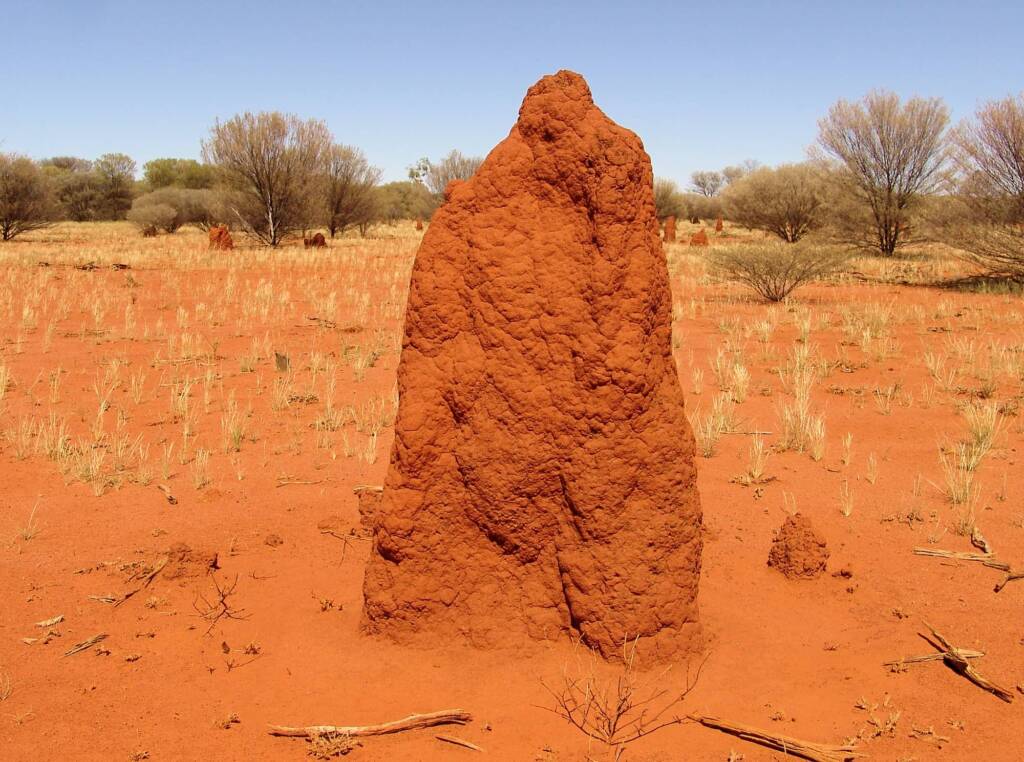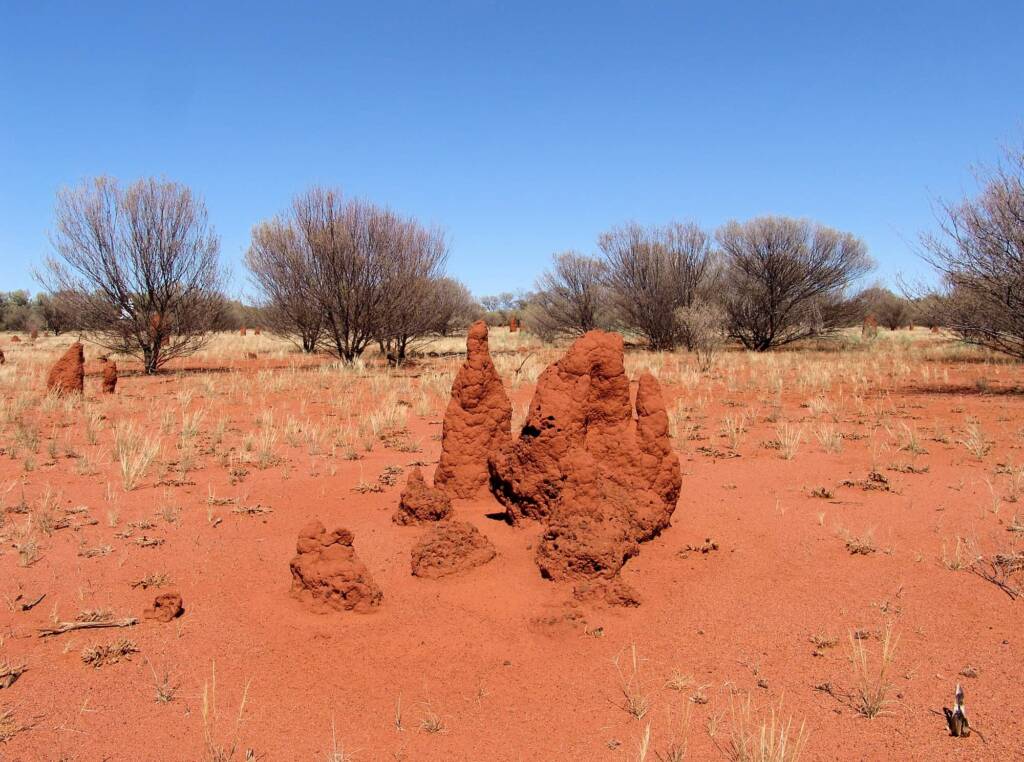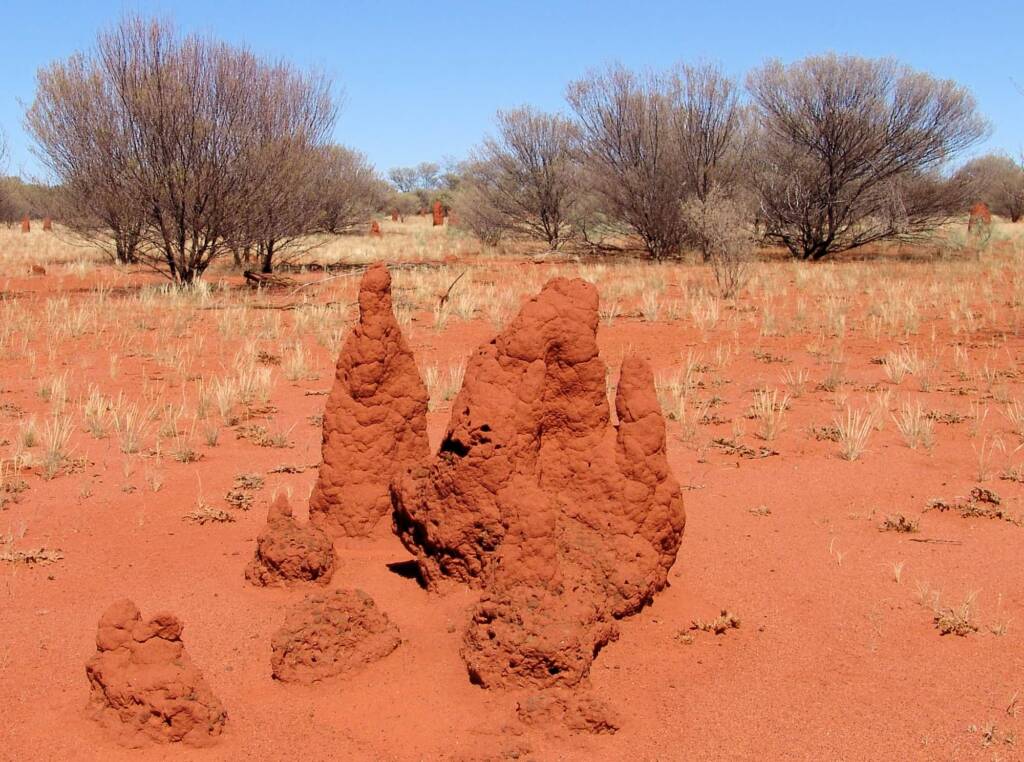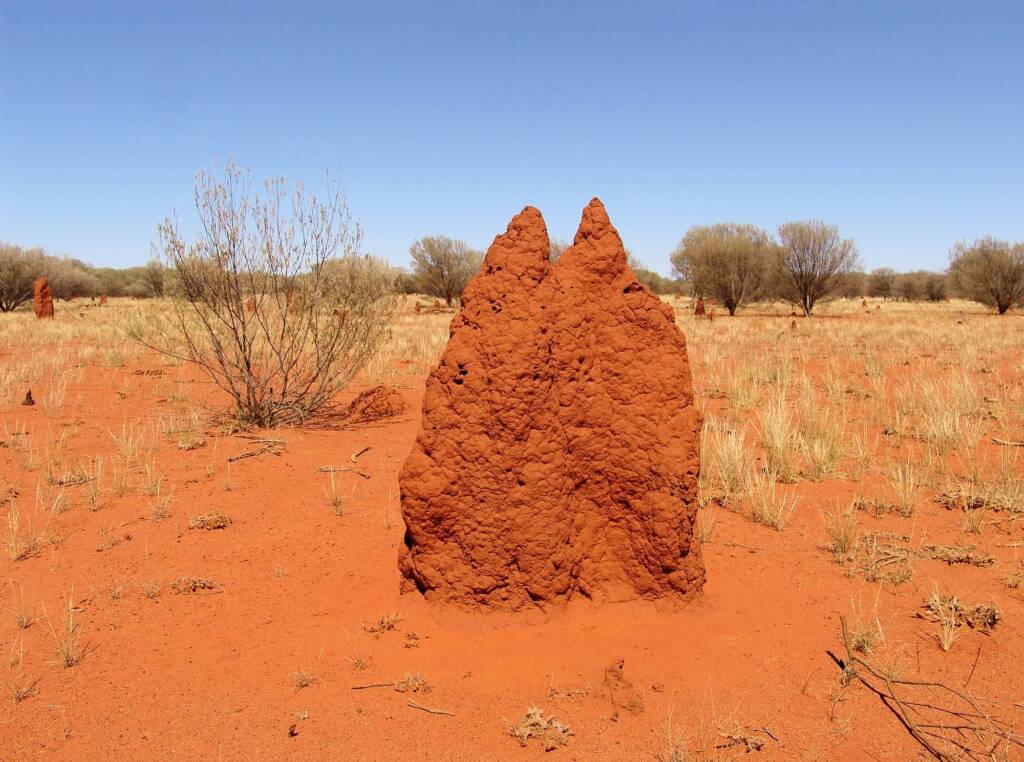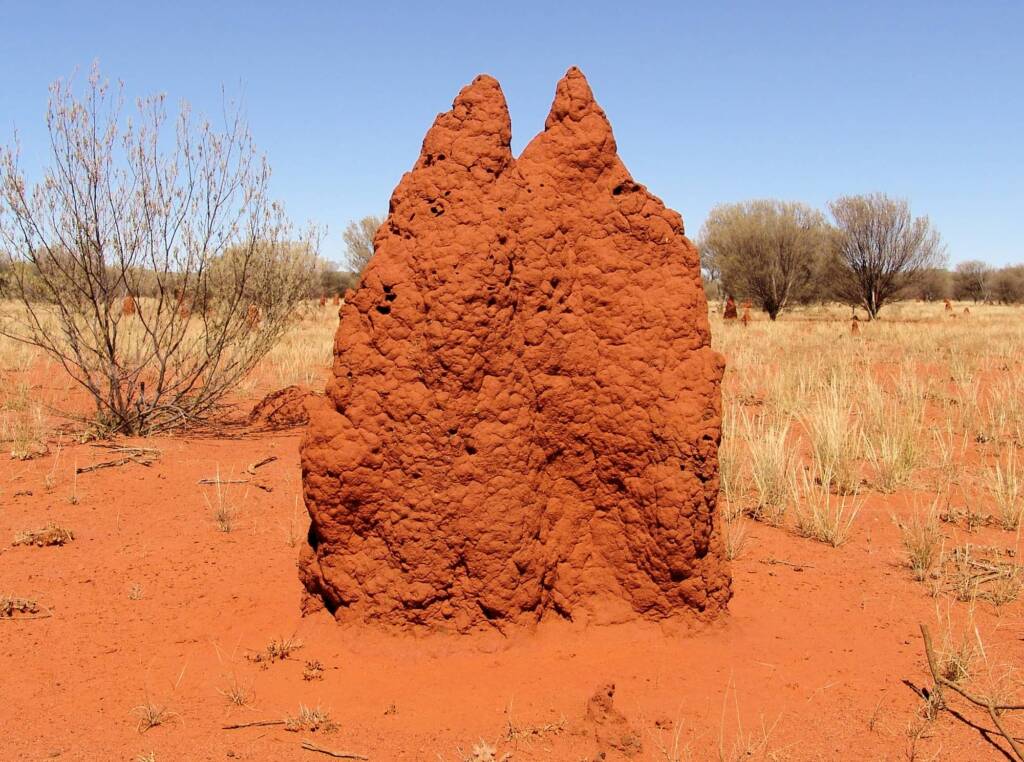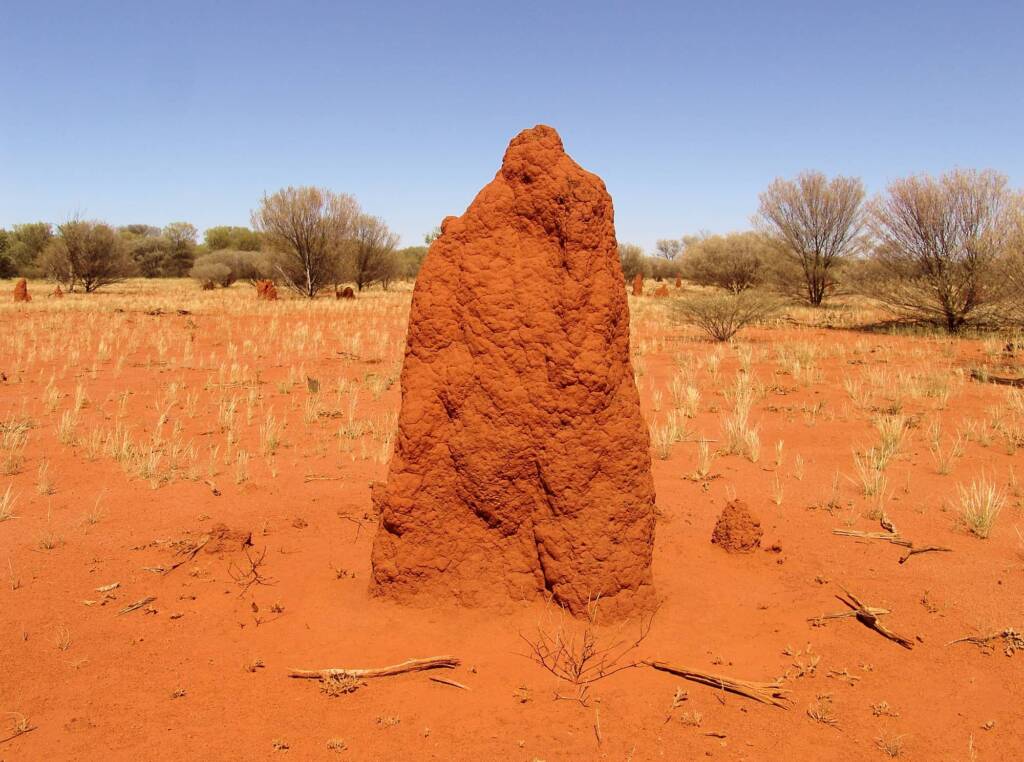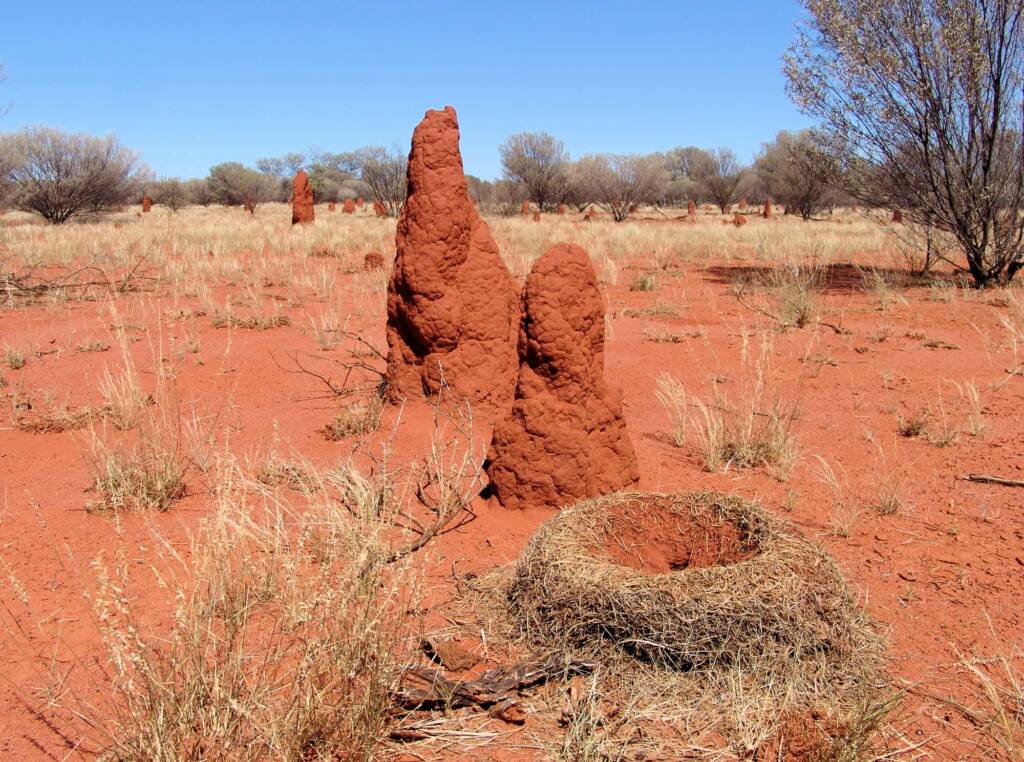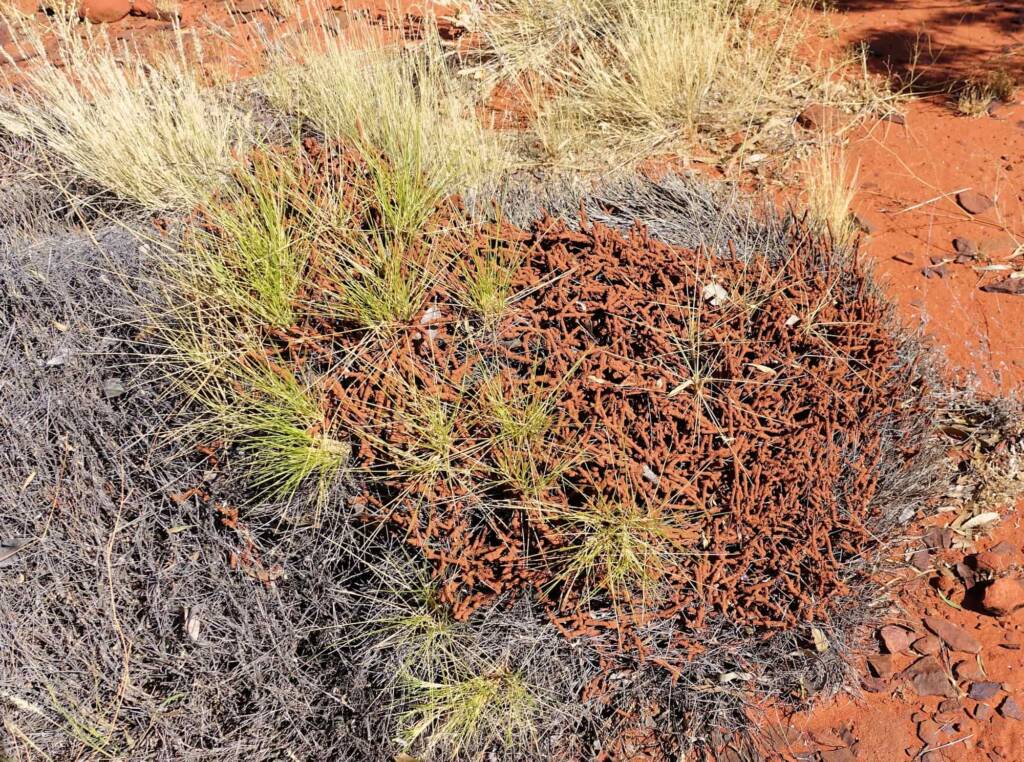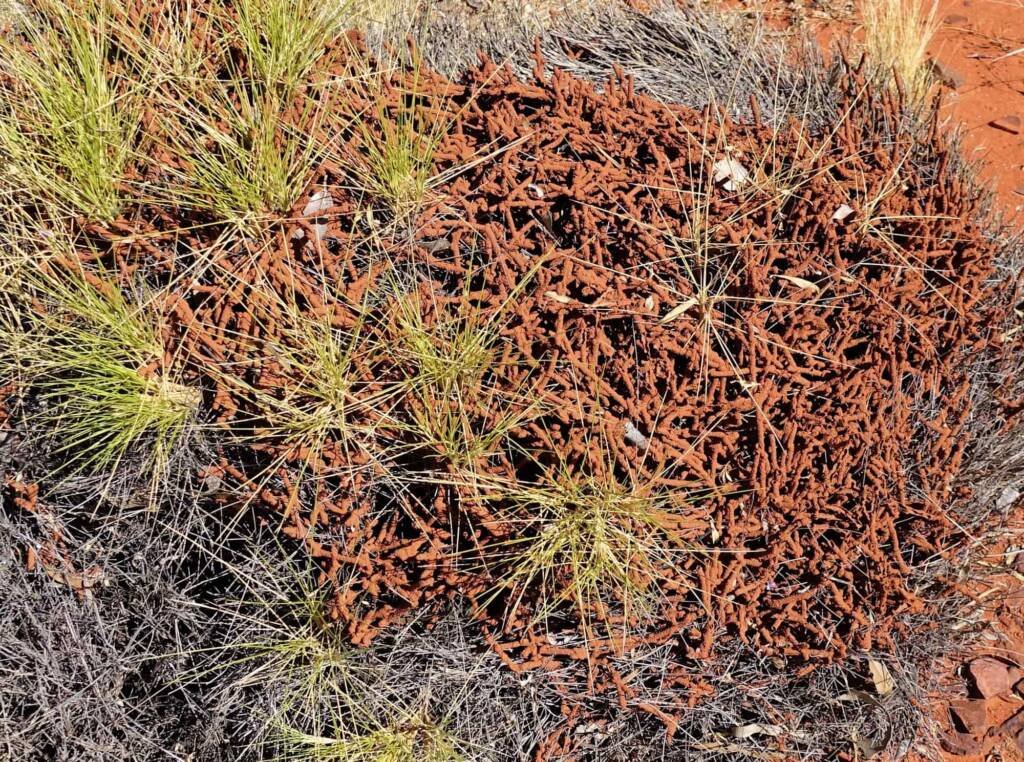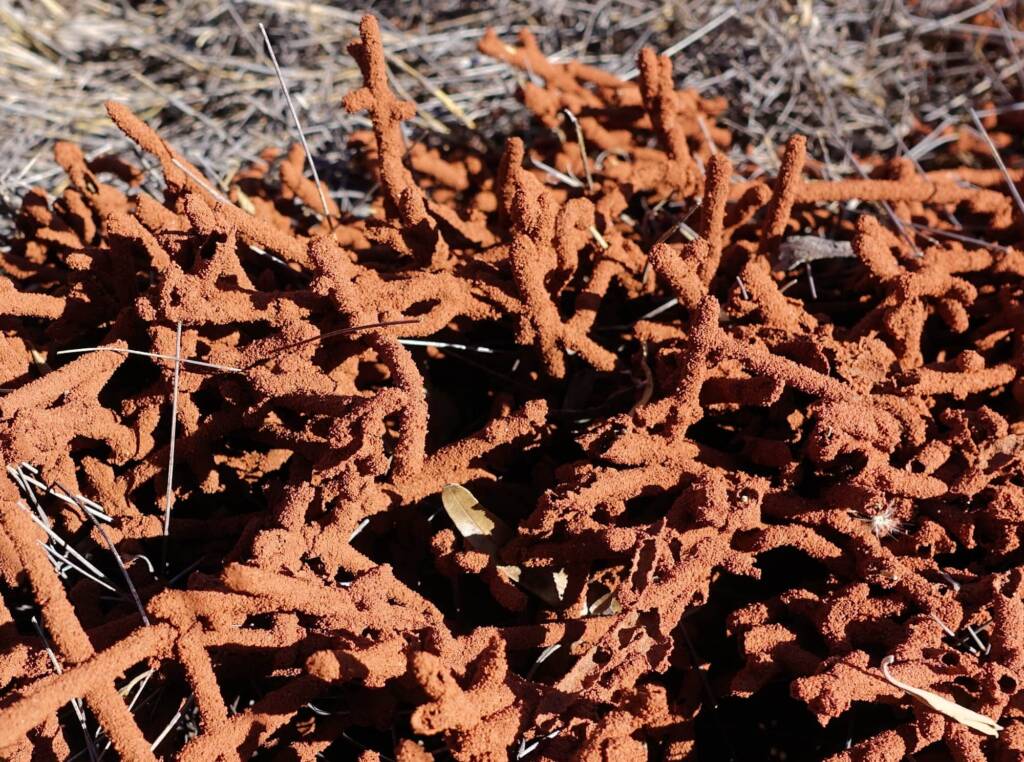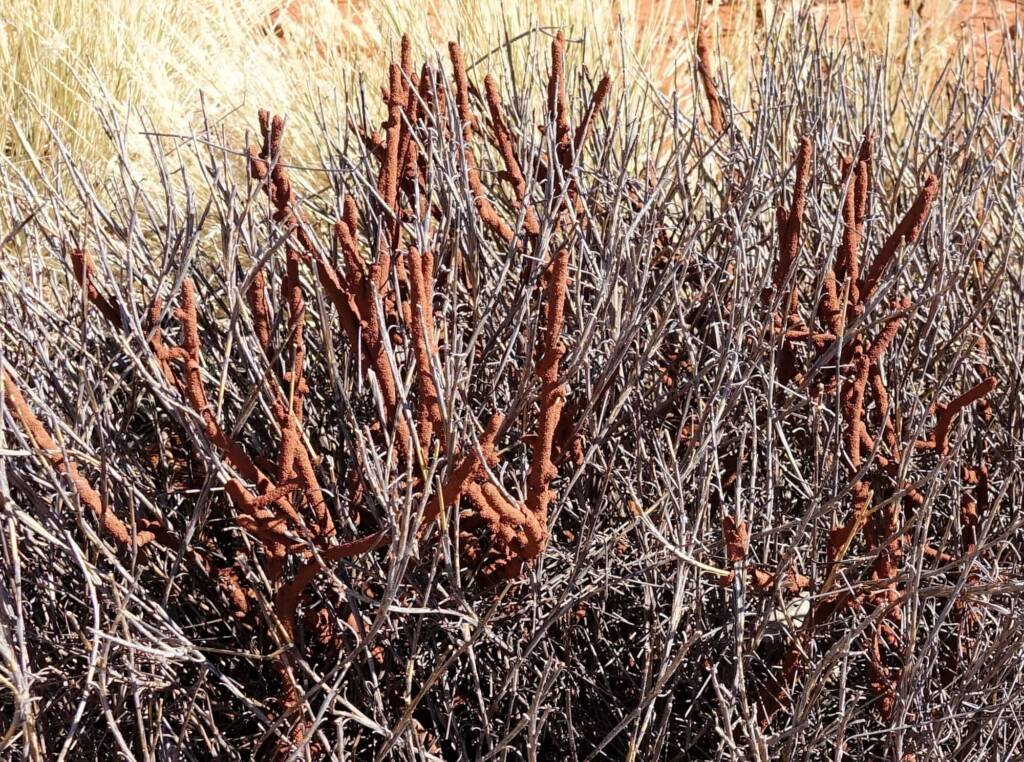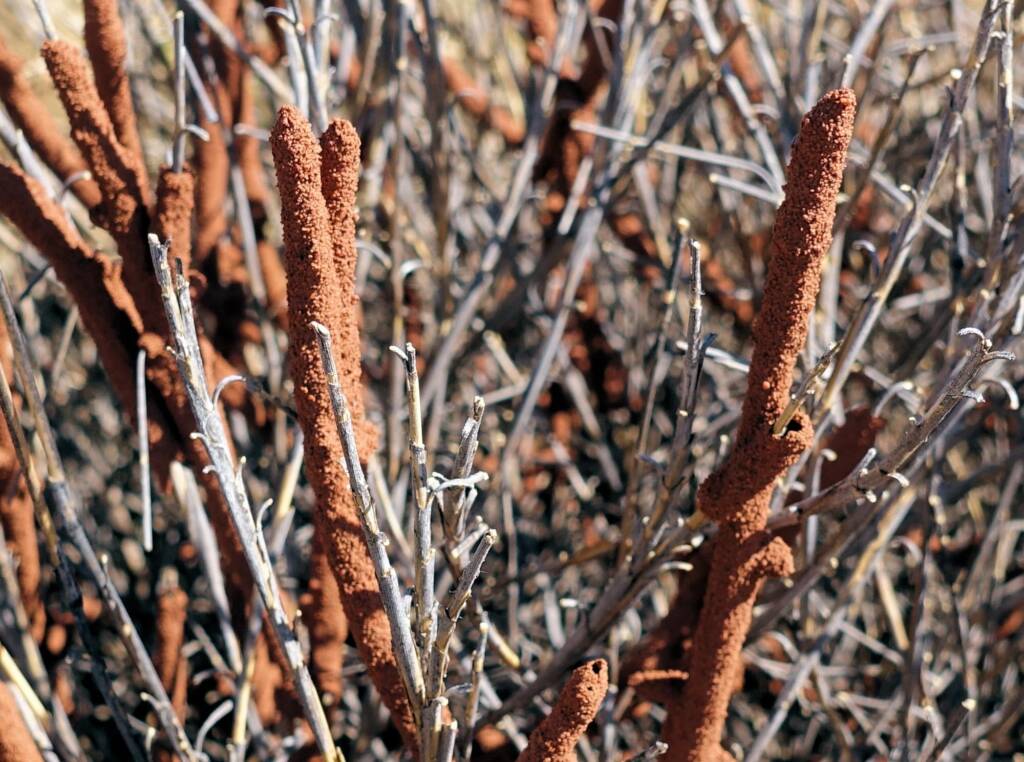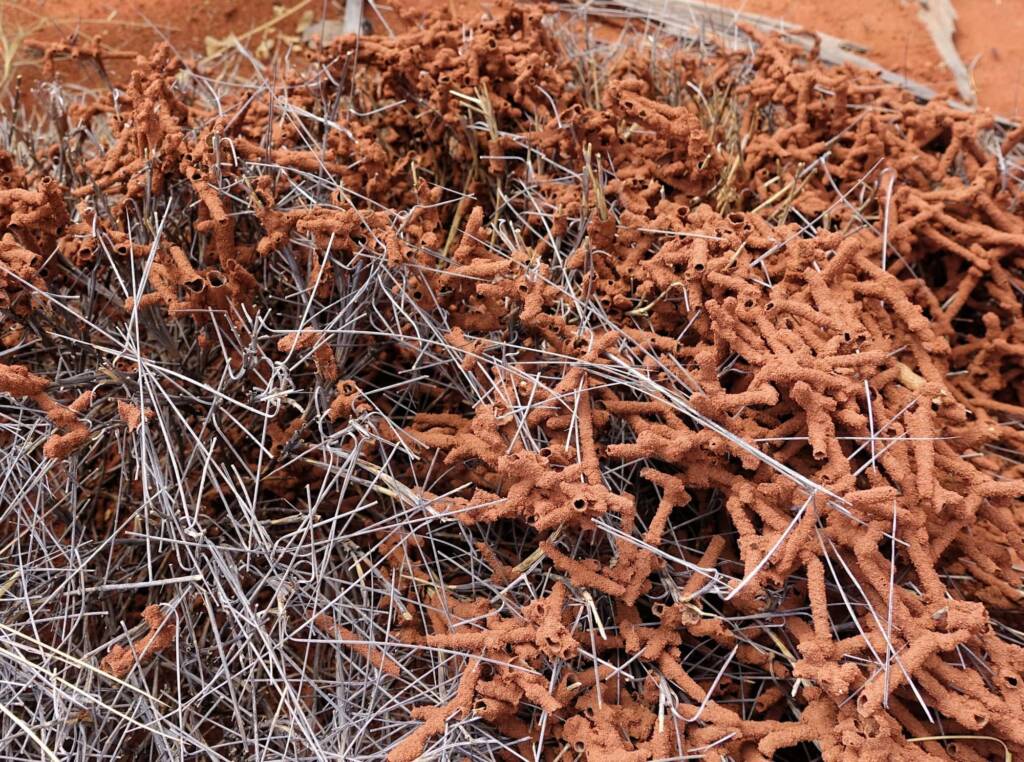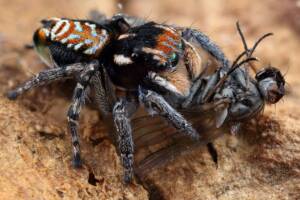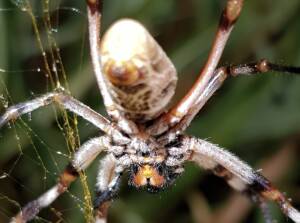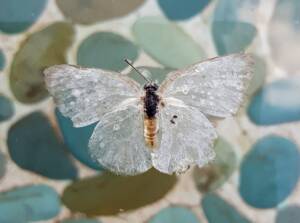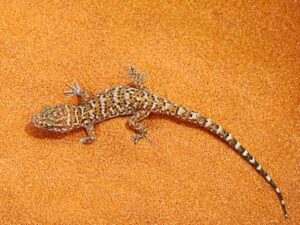BlattodeaBlattodea – image index Amitermes meridionalis Anamesia sp Balta bicolor Bush Cockroach Ellipsidion Nasutitermes triodiae Termite — Alate
The termites responsible for the iconic large termite mounds found in the Top End are from the species Nasutitermes triodiae, who are also commonly known as the cathedral termites.
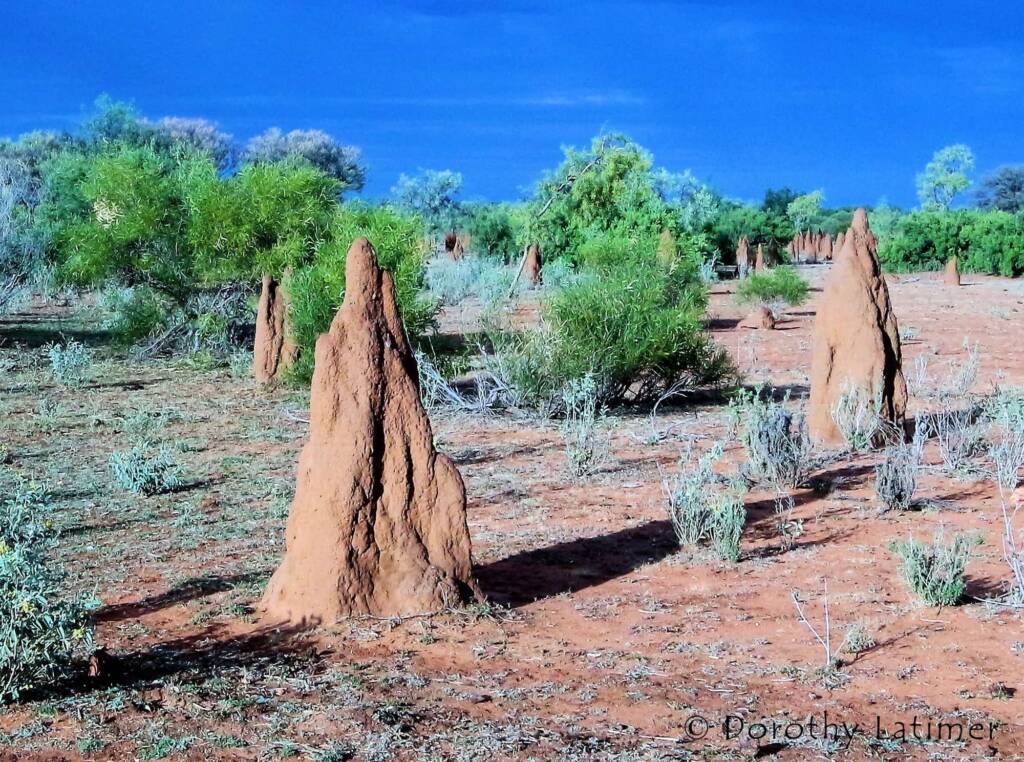
The nest structure do vary in different parts of Australia. In Western Australia they have the classic hay stack appearance, compared to the cathedral structures in the Top End.
The termite mounds in Central Australia are much smaller and less impressive, it being assumed that the heat and arid nature of the Central Australia region is the main reason for this difference in termite mound shapes and sizes.
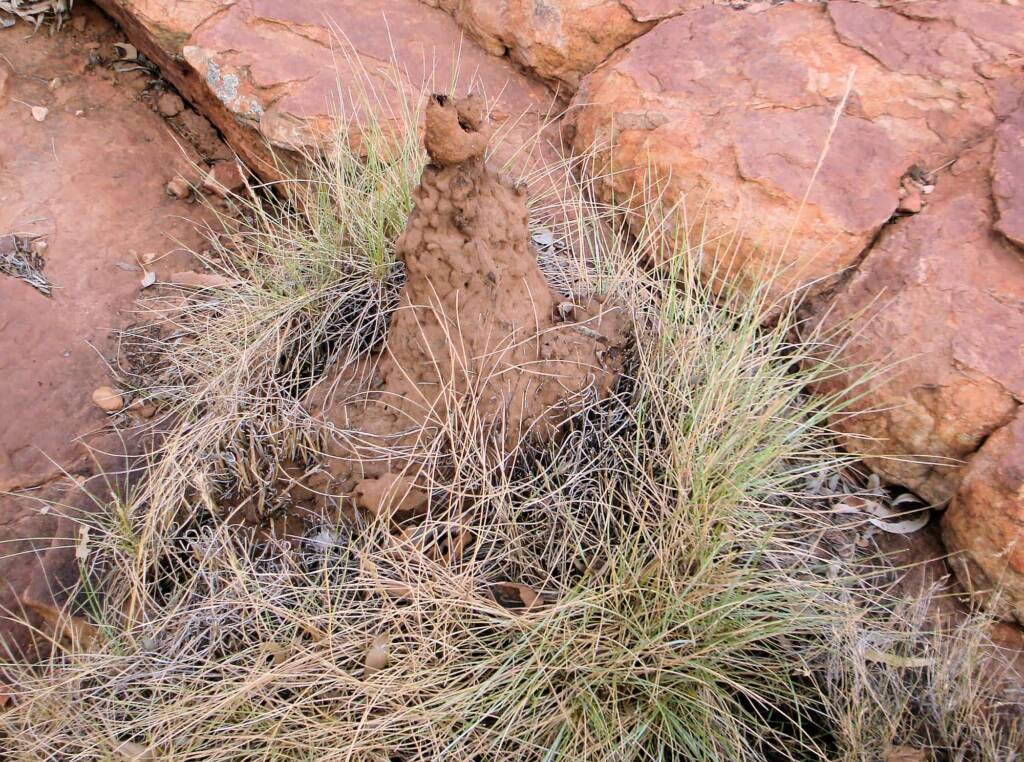
The tall fluted cathedrals mounds are thought to be a mechanism by which the termites reduce CO2 levels in the nest. They are impressive structures, known to reach 6 metres in height and possibly taller. Today, termite mounds appear to not be as big as those in previous decades. This is thought to be due to the many fires that sweep the landscape, which is suspected to affect the size of nests ie colony size is one of the drivers for nest size.
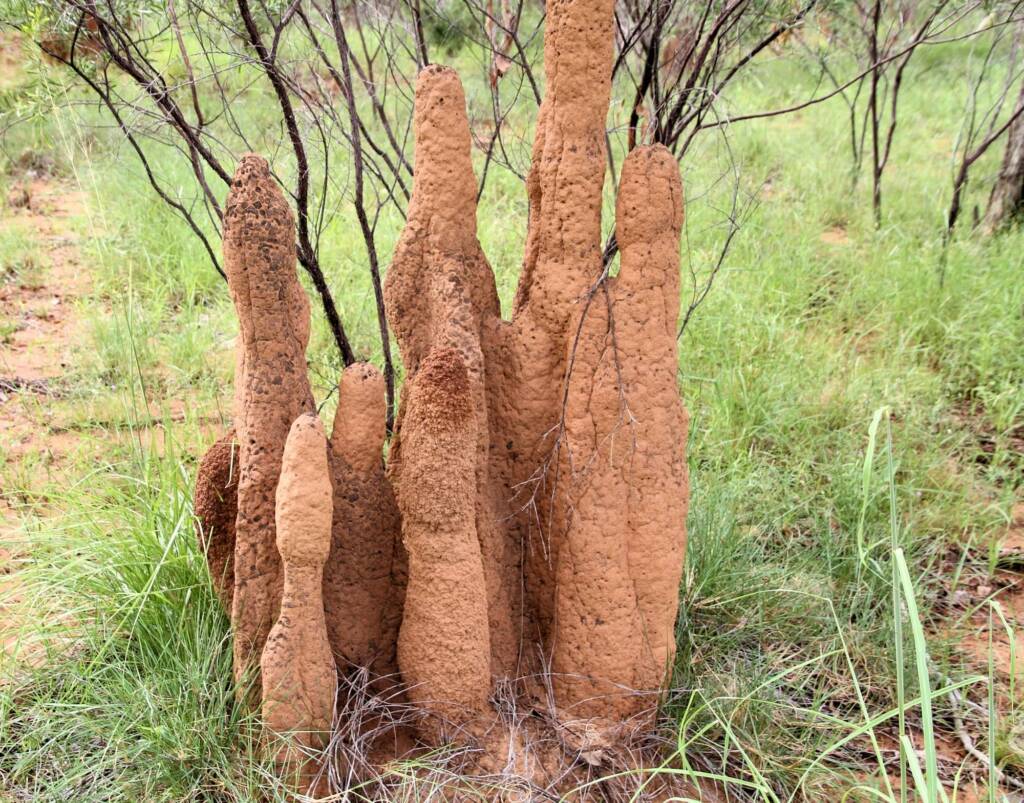
Very little research has been done to see what happens under ground with this species of termite Nasutitermes triodiae and whether the termites in the arid regions, such as those found in Central Australia, have a bigger nest underground, as this can only be speculated as to the size of their subterranean nests.
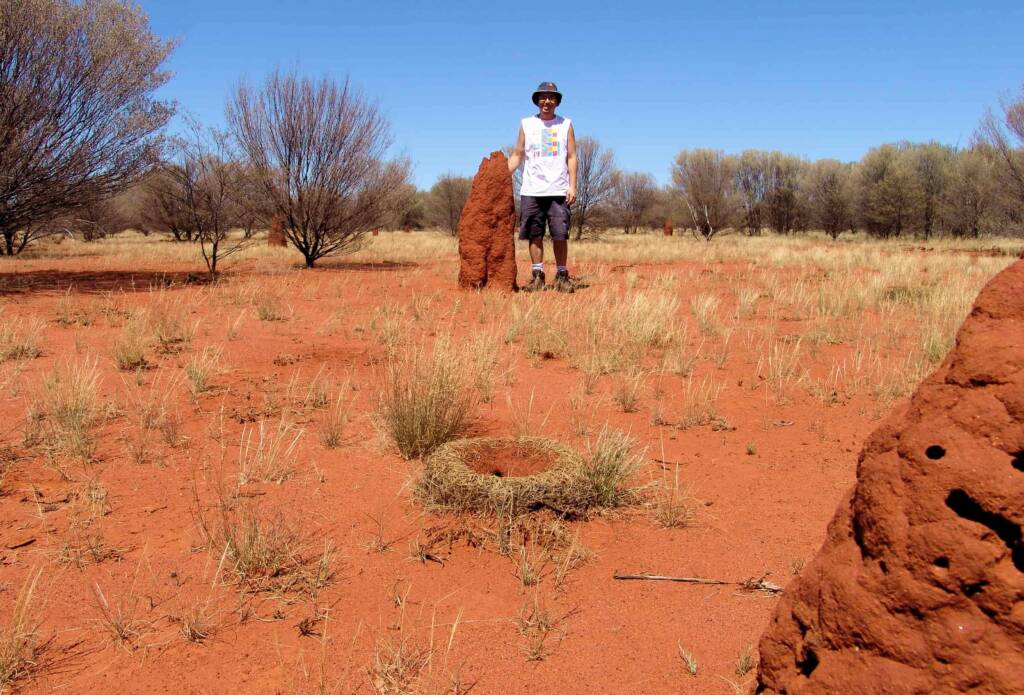
Nasutitermes triodiae are a grass eating species of termites known as snouted termite. They are also sometimes referred to as the spinifex termite, as they are often found in Spinifex (Triodia) Grasslands.
In the following images presented here, are the activities of the same species of termites. These tubular shaped mud structures, encasing each blade of spinifex grass, are referred to as “feeding tubes”. If you are able to view the tubes at night, you will have a better chance of catching a glimpse of the termite activities. The grass is consumed from within the mud tube structure, leaving the hollow tube behind. The mud tubes themselves are fragile.
It is thought that the spinifex grass and the remains of the spinifex grass belong to either Triodia scariosa and / or Triodia pungens.
Central Australia is an arid region with very little moisture, hence some termite species are subterranean. The main colony that would have created these tubular shapes will be subterranean (to beat the heat). There will most likely be a mound nearby, although very small compared to the giant mounds further north.
The above pictured termite mud tubes were up above the chasm that forms Palm Valley. Just a few metres away was the following termite mound, no higher then half a metre.

The following image is of termite activity at Kings Canyon on the Rim Walk.

You can see more information in our FInke Gorge National Park – Nasutitermes triodiae and Watarrka National Park – Termites.
Many thanks to Graham Brown for the additional information included on this page about the Nasutitermes triodiae, member of the NT Field Naturalists’ Club Inc, Facebook group
Also thanks to Jarrod Lea for help with ID of this species, from NT Field Naturalists’ Club Inc, Facebook group and Alix Simpson for help with ID of this species, from Entomology Australia “Invertebratology” Facebook group
- Scientific classification
- Kingdom: Animalia
- Phylum: Arthropoda
- Class: Insecta
- Order: Blattodea
- Infraorder: Isoptera
- Family: Termitidae
- Genus: Nasutitermes
- Species: N. triodiae
- Binomial name: Nasutitermes triodiae
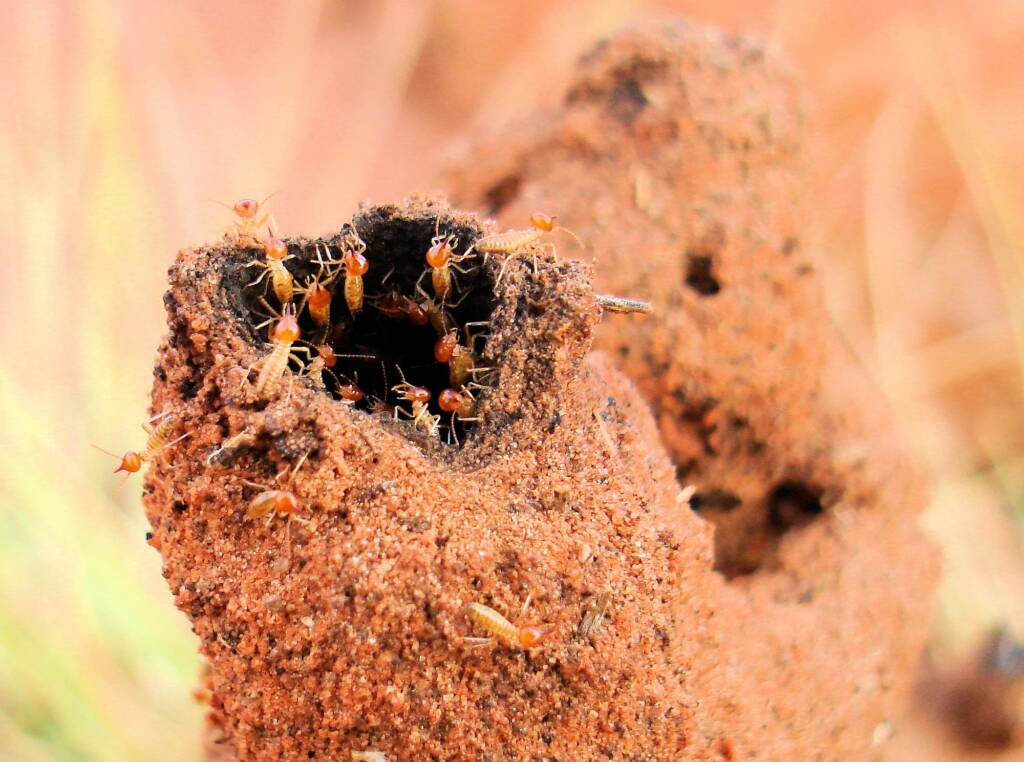
Footnote & References
- Parallel evolution of mound-building and grass-feeding in Australian nasute termites, Biology Letters, 2017 The Royal Society Publishing, Arab DA, Namyatova A, Evans TA, Cameron SL, Yeates DK, Ho SYW, Lo N. 2017 Parallel evolution of mound-building and grass-feeding in Australian nasute termites. Biol. Lett. 13: 20160665. http://dx.doi.org/10.1098/rsbl.2016.0665, https://royalsocietypublishing.org/doi/pdf/10.1098/rsbl.2016.0665
- NT Field Naturalists’ Club Inc, Facebook group, https://www.facebook.com/groups/ntfieldnaturalistsclub
- Entomology Australia “Invertebratology” Facebook group, https://www.facebook.com/groups/507004496955277
InsectsInsects Index Insects Life Cycle… Bees Beetles Blattodea Butterflies Coleoptera Cicada Crabronidae Diptera Dragonflies & Damselflies Formicidae Hemiptera Heteroptera Mantodea Moths Neuroptera Orthoptera Orthopteroid Processionary Caterpillar Stink Bugs, Shield Bugs and Allies Wasps Water Scorpion (Laccotrephes tristis) Witchetty Grub
BlattodeaBlattodea – image index Amitermes meridionalis Anamesia sp Balta bicolor Bush Cockroach Ellipsidion Ellipsidion australe Ellipsidion humarale Nasutitermes triodiae Termite — Alate


